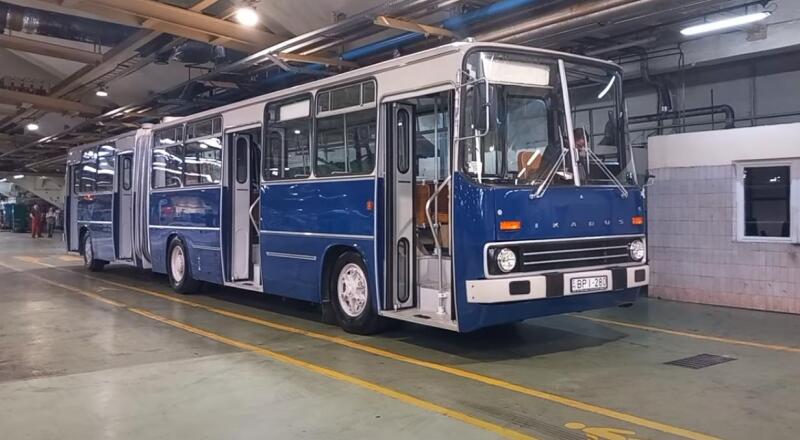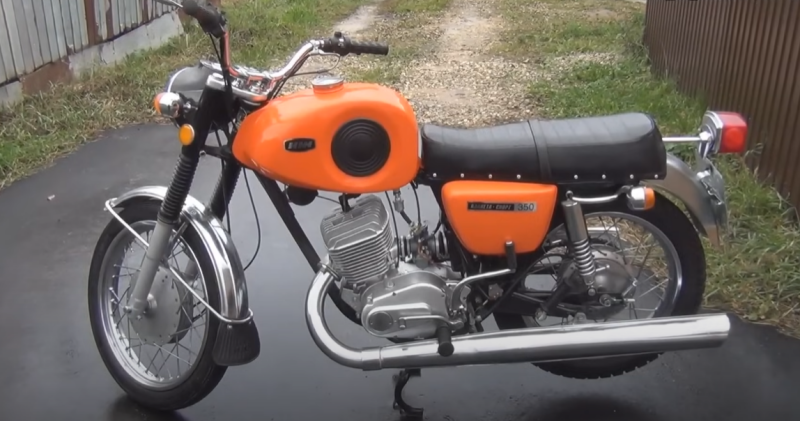Engineers from Novocherkassk made a significant contribution to this process, and Georgian specialists did not lag behind them. Models of electric locomotives were assembled on the basis of the Tbilisi enterprise, which are still successfully operated on the roads of the entire post-Soviet space.
 The VL11 locomotive is ready to work harder. Photo: youtube.com
The VL11 locomotive is ready to work harder. Photo: youtube.comTEVZ specialists have been working on one of them since the early 70s. At that time, the leadership of the USSR Ministry of Railways set the specialized enterprise the task of improving the design of the existing VL10 locomotive. The main emphasis was on increasing power and traction, giving the ability to tow a larger number of loaded cars at the same time.
New product with controversial characteristics
Tbilisi engineers took a responsible approach to fulfilling the assignment. Moreover, they also remained completely confident: in the coming decades, their native country will need super locomotives capable of transporting an incredible amount of rolling stock.
So, in 1975, a new electric locomotive VL11 was introduced. In addition to improved characteristics, it was endowed with other useful properties. The new technology could also work according to the system of many units (SME). But the designers did not stop there, offering as a bonus additional auxiliary sections installed in the middle or tail of the train.
The latter element significantly increased the demand for the new locomotive for operation on mountainous sections of roads with long climbs. Here the auxiliary sections, which served as a pusher, were an invaluable find for railway workers.
 Dashboard of locomotive VL11. Photo: youtube.com
Dashboard of locomotive VL11. Photo: youtube.comHowever, the theoretical calculations and hopes of the creators were not fully justified. After the new product began to be intensively used on different sections of Soviet roads, a number of complaints and criticism began to pour in from users. Locomotive crews complained about several negative aspects in the operation of the electric locomotive, the main ones being:
✅ insufficient sound insulation of the driver’s cabin
✅ tendency of technique to boxing
✅ filling of brake cylinders too quickly
✅ ineffective traction motor control system
The last factor arose as a result of the fact that the element was simply transferred to the VL11 design from its predecessors without any changes or modifications. Some drivers even noted the lack of convenience in organizing their workplace and weak elements in the body of the structure.
 High-voltage compartment of cargo VL11. Photo: youtube.com
High-voltage compartment of cargo VL11. Photo: youtube.comAll this led to the fact that the Tbilisi comrades had to urgently implement a project to seriously modernize the basic VL11, which turned out to be too “raw”. As a result, only 574 units were produced in the original design, after which the railway workers began to be supplied with a number of modifications of the locomotive, in which the Georgians tried to eliminate the existing shortcomings.
Indicators and a number of modifications of VL11
Although the new technology was subjected to extensive criticism, no one would dare deny a number of its advantages over previous locomotives. This can best be seen from the indicators and characteristics of VL11 given below:
✅ maximum speed - 100 km / h
✅ hourly power of TED – 5200 kW
✅ service weight - 184 tons
✅ total length - 32,88 m
✅ width - 3,16 m
✅ height - 5,12 m
Initially, the locomotive was intended for mixed types of work, therefore it was classified as a cargo-passenger vehicle. Its first tests took place at the Suram Pass in Georgia. Already here, experienced drivers came to the conclusion that when starting an electric locomotive in normal mode (due to the lack of a serial connection), there was a serious risk of slippage and even burnout of the contact wire.
In order to somehow get out of this situation, some road managers issued a decree on the need to start driving from the “MS” position, later resetting the controller to “zero” and moving the reverse to “M”. Further travel took place on joint ventures and parallel connections.
Having assembled less than six hundred locomotives, TEVZ specialists resorted to design modifications and improvements to the weak points of the base VL11. This process was gradual, so in the coming years about a dozen different modifications appeared, in which a number of positive changes occurred:
✅ VL118 – replacement of electrical circuits and installation of SAURT
✅ VL11U8 – increase in adhesion weight up to 200 tons
✅ VL11M – possibility of comfortable operation on three traction motors
In addition, in the modernized versions the compressor drive was replaced or significant changes were made to the power and control circuits. This process did not stop in the post-Soviet period. For example, in 2007/2008, thirteen basic VL11s received the cabin from the fifteenth model, with the elimination of the equipment necessary to operate the Multiple Unit System. Yes, the huge trains and volumes of transportation of the Soviet period are a thing of the distant past, so CMEs have become irrelevant. The index “M5” was added to the names of these locomotives.
The next option for processing structural elements is VL11M6. It was prepared specifically for the Dnieper railway and Azerbaijan. The electric locomotive received a fundamental homologation, which included a body from the ES4K model and a number of other modern elements. During the period from 2008 to 2015, 32 units of equipment underwent such changes.
 Freight locomotive VL11 at work. Photo: youtube.com
Freight locomotive VL11 at work. Photo: youtube.comThe most recent modification is considered to be VL11K(N). They provided for the replacement of the front part of the driver's cab (giving it a modern look and better streamlining). Also installed inside are more efficient electrical equipment and a control panel.
Another modification for local needs can be considered single-section four-axle versions for passenger transportation. For the first time, such a variant was created at the TEVZ base enterprise, with the designation 4E10. Azerbaijan has similar experience. Here, at the Boyuk-Shor locomotive depot, four samples of equipment with a different cabin, power and control circuit were processed. They received the local designation E4s, in which the number indicated the number of axles.
Long-term operation of VL11
Probably, if this electric locomotive had appeared in the capitalist world with its fierce competition, it would have had a short and sad history. But the Soviet system existed according to different principles. They constantly tried to improve the initial and not entirely successful design with the help of various improvements. To some extent, the creators succeeded in this.
 Powerful VL11 engines allow you to tow a large number of cars. Photo: youtube.com
Powerful VL11 engines allow you to tow a large number of cars. Photo: youtube.comI will say more, in the 90s, when in the already independent Soviet republics the issue of a shortage of traction power became acute, any equipment on the move was held in high esteem. Moreover, the modernized units always compared favorably with the original models. Therefore, the drivers, comparing them with the basic VL11, remained satisfied (despite the fact that there were still quite a few weak points in the design).
Thus, conditionally favorable circumstances allowed VL11 to stand in assembly shops for three decades - from 1977 to 2006 (with modifications - until 2015). The total number of assembled units of equipment reached 1346 copies. The most popular, besides the basic version, are VL11M - 467 pieces and VL118 - 259 pieces.










